8 Toy photography tips & tricks to get you started
by Alex W.
An unexpected benefit of the lockdowns over the past 18 months has been the necessity to broaden my approach to photography when faced with the prospect of not being allowed out into the landscape. One genre that instantly appealed to me was toy photography, and here I'll share some top toy photography tips I've picked up in this time.
Toy photography isn't a genre of photography that is all that well known but it has seen a significant increase in popularity over the past couple of years and it's a great way of combining two hobbies and creating art that is unique and true to yourself.
8 toy photography tips & tricks
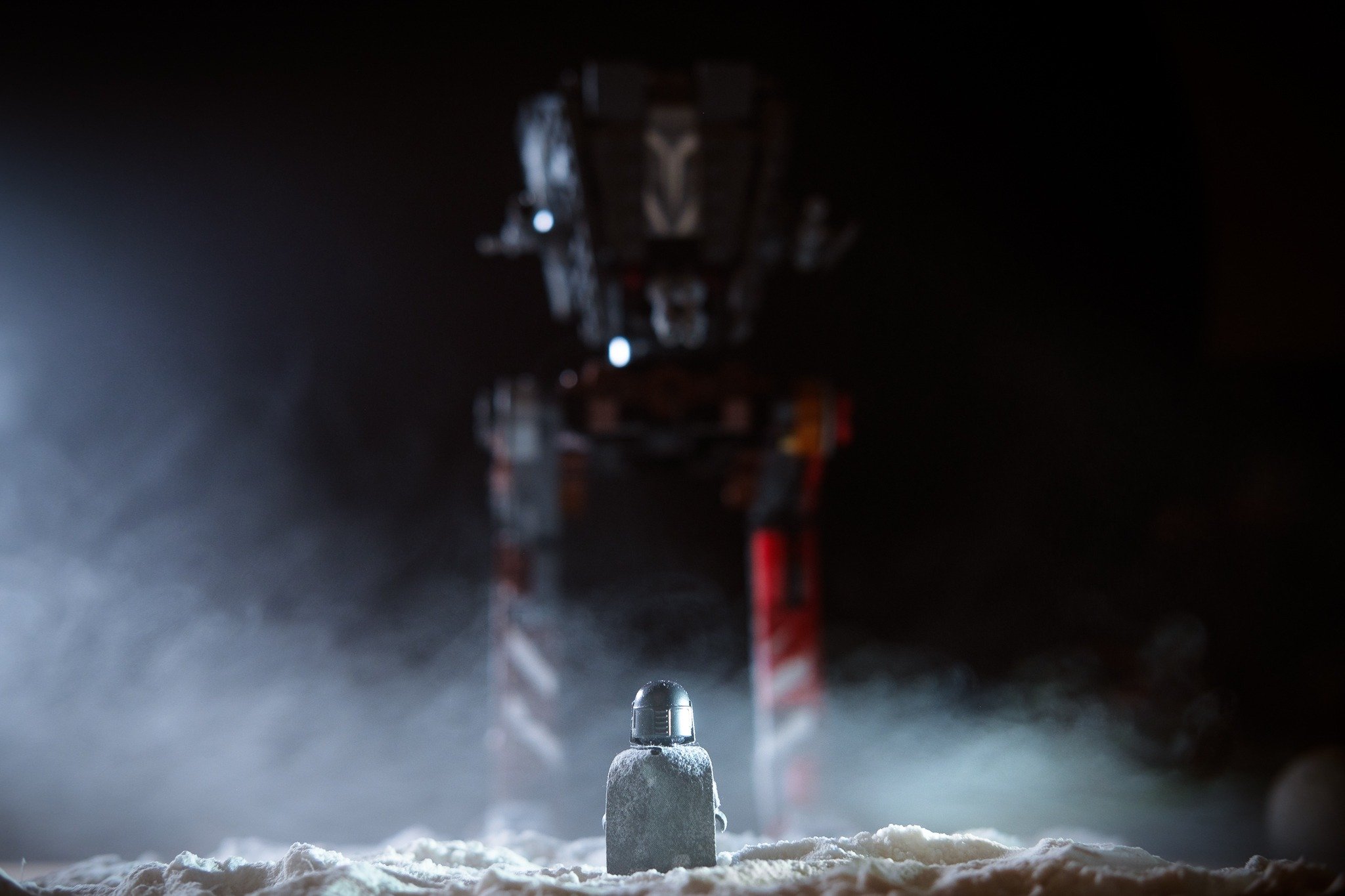
1. Find yourself some space
It doesn't have to be a big space, but having a little area for your toys to call their own is crucial when it comes to toy photography, especially once we get into the realm of special effects below!
It gives you the freedom to move your figures around in the space and create compelling compositions without the need to be constantly moving little things out of the way.
I've cleared half of one of the worktops in my home office and have that space dedicated to toy photography.
2. Get (or make) yourself a backdrop
Backdrops are absolutely essential for toy photography. Nothing ruins the immersion in an image quite like a stray window ledge creeping into shot.
Again, this doesn't have to be anything fancy. You can buy photography backdrops on Amazon like the one below or you can even make your own with almost no effort.
-
Mountdog 10 x 12 ft Photography Backdrop Background,...
- ♣【10x12ft Black Backdrop】 Mountdog photography backdrop background is made from environment-friendly soft fabric, both front and back are black, can be used on both sides, easy to use, store and carry. All edges are carefully finished preventing tears in the material, and should it become stained, it can be dry-cleaned or even machine washed. With crossbar hole design allows to be draped or hung.(Note: The Backdrop Stand is not included.)
- ♣【Multi-Functional】 Mountdog backgrounds for photography can be used for photo studio, home decoration, weddings, parties, newborns, children, product photography, live streaming, video production etc. As well as meet the needs of amateurs and professionals of all levels of photographers.
I simply bought two cheap sets of bedsheets (one black, one white) from Amazon and hang those up when I'm shooting. Cheap, but very effective.
3. Choose toys that inspire you
This is more of a personal decision. I know toy photographers who can pick up any old model and their creativity just starts to flow, creating ideas and scenes in their head from absolutely nothing.
I'm not one of those photographers. I need a model that inspires something in me and gives me a starting point to build a scene in my head.
For this reason, my go-to models are Star Wars LEGO sets and this makes up the bulk of my toy photography portfolio.
You might be one of those lucky, extraordinarily creative people who can just create something from nothing. If so, great! If you're not one of those, don't torture yourself.
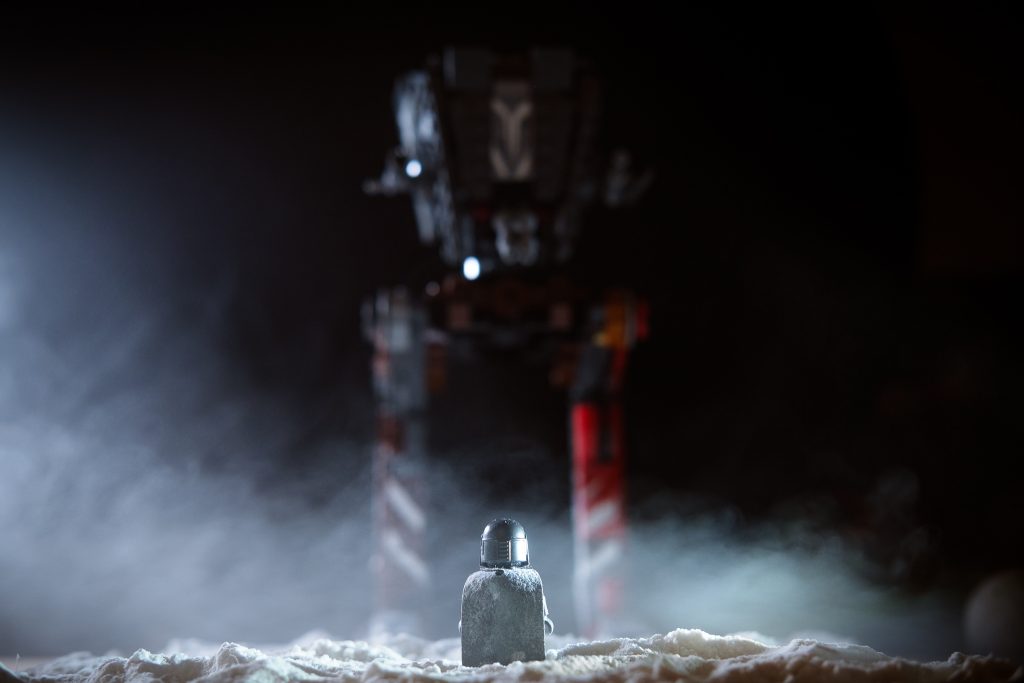
4. Come up with a story for your toys
This is one method I use to create compelling and cohesive scenes from what is essentially a bunch of inanimate objects.
First, I choose the main focus of my image and then I start to build a story around it. The direction this story takes leads me to add other elements into the scene until eventually I have a fully fleshed-out miniature world to work with.
Take the image below, for example. Love it or hate it, the most recent Star Wars trilogy introduced the Stormtroopers as real people and I came up with the idea of trying to capture this juxtaposition in an image.
So, the Stormtrooper would be my main focus. I then started building out other elements, in this case a miniature house complete with a window and a table for my subject. I added in some lighting and processed it to be dark and oppressive and, voila!
I call it "Bad Day at the Office".
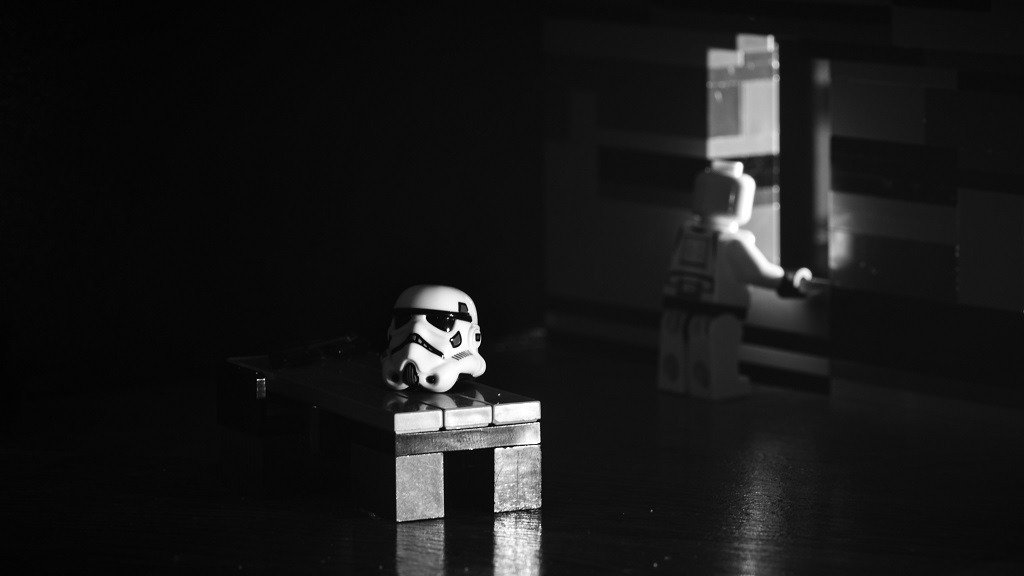
5. Get down to their level
This is the same for pet photography, portrait photography and pretty much any genre of photography that includes subjects that are smaller than us. Get down to their level and it shows the world through their eyes!
If you take an image of a toy from eye level, guess what? It'll just look like a toy.
Crouch down (I recommend using a tripod) and get the camera down to their level and suddenly the viewer is transported into the toy's world. It allows us to use perspective and depth of field in a much better way and turns an otherwise static scene into something that is almost lifelike.
6. Experiment with the lighting
Lighting is a key component in all genres of photography and toy photography is no different.
Experimenting with the intensity, warmth and directionality of the lighting is the key to creating a feeling of depth and drama within your miniature scenes.
Again, this doesn't have to be expensive. You can, of course, use all manner of high-end off-camera flashes or studio lights but most of my early toy photography work was done with everyday light sources I had lying around the house. In fact, I still use my trusty headlamp and desk lamp as light sources today!
I have added a couple of extra pieces of equipment, though. One is simply a dimmable LED video light that I use as my main light source - you can pick two up for under $50 below - and the other is a bag of tiny battery-powered LED lights for placing inside models or around my scene for little pieces of fill-in light.
-
Neewer 2-Pack Dimmable 5600K USB LED Video Light with...
Video Call Lighting: With adjustable brightness from 10% to 100%, get soft and even lighting on a video call with this tabletop lighting kit. Ideal for Zoom meetings, Skype calls, YouTube streaming, and more
USB-Powered Light: Keep the LED light powered via a USB wall charger (5V 2A) or USB power strip. For continuous long-time use, avoid powering the light with a laptop, tablet or power bank in case of fast battery drain and insufficient power output
If you get an LED lighting panel that allows you to change the color temperature of the light, that's even better. With that you can add warmth or coolness to the lighting, as well as experimenting with the direction and intensity and combining it with other light sources.
Take the image below as an example. I increased the color temperature to give a warmer feel to the image and used a lens blower to blow the sand and create a sandstorm effect on Tattoine.
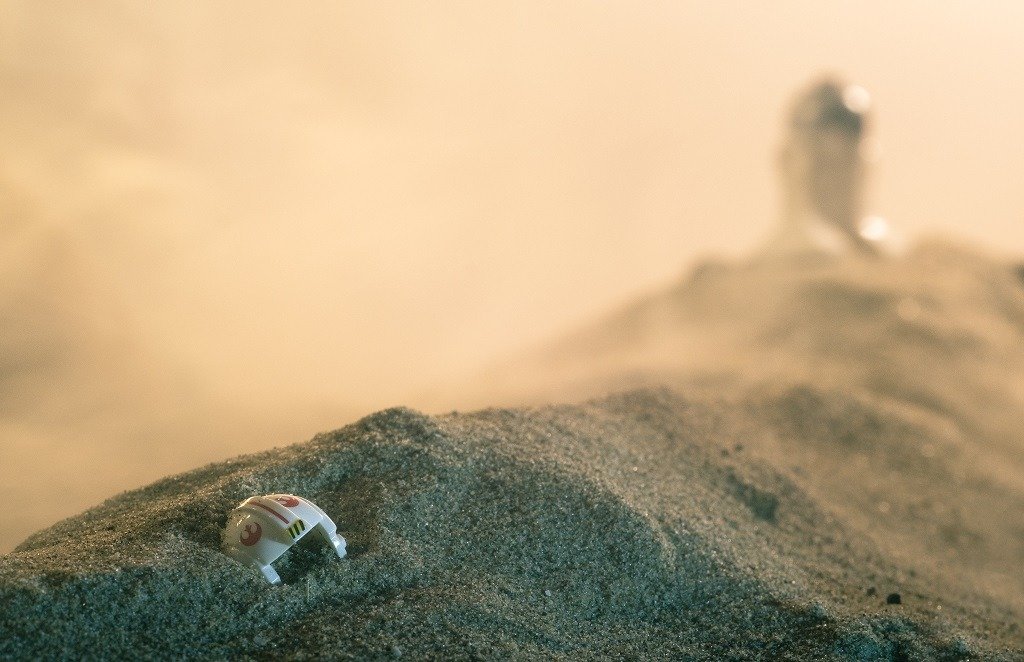
7. Don't forget the special effects
Many of the franchises our toys come from, whether it's Star Wars, Harry Potter or Marvel, would be nothing without specials effects and creating special effects within our toy photography scenes is one of my favourite parts of the job.
Environmental effects such as snow, sandstorms, wind, rain and even a nuclear apocalypse can really create a level of immersion that is difficult to replicate and for that reason it's worth spending some time on it. There are plenty of household items that can help create these effects, some of which I've listed below, but one thing I would add it to make sure you clean your toys afterwards!
- Snow - Baking powder and climbing chalk are two very realistic substitutes for snow.
- Mist - I use a can of Atmosphere Aerosol.
- Rain - A water mister (like you use for watering houseplants) is perfect.
- Sandstorms - Sand. There really is no substitute that's easier or cheaper to get your hands on.
- Nuclear apocalypse - Ash from the barbecue is ideal for creating post-apocalyptic landscapes.
A lens blower is the perfect addition to this array of tools to add some dynamism to the image, while objects such as suns or moons can be created in a variety of ways. One way is to cut a hole in your backdrop and shine your light source through the hold, while another is to include the light source in the image but attach something like a Pringles tube to the front of the LED panel.
I store all my 'environmental conditions' in tupperware boxes so I can reuse things like baking powder, chalk, BBQ ash and sand.
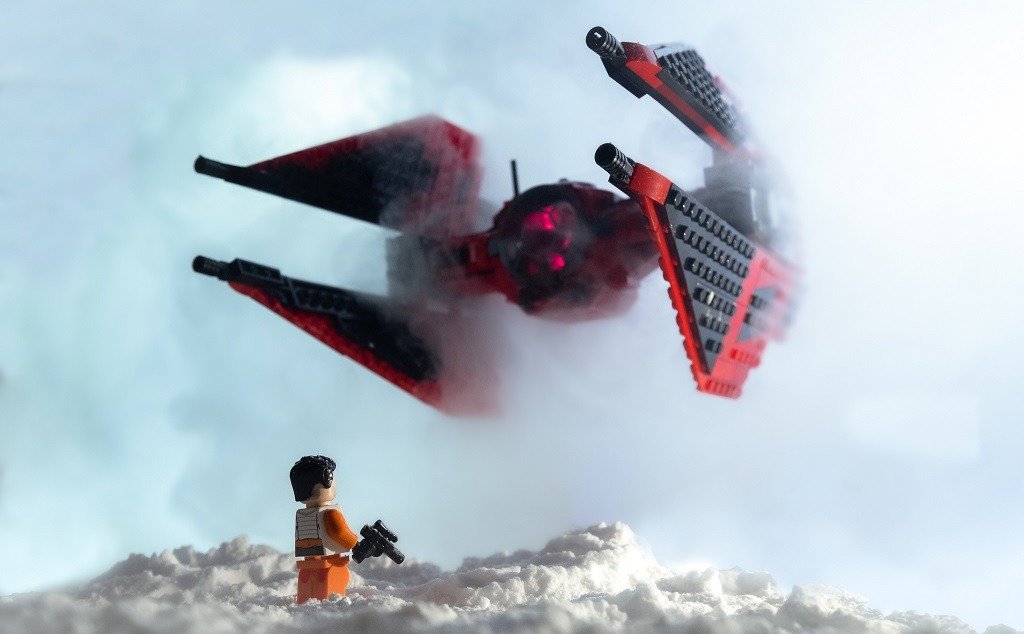
8. Accessories can add that extra oomph
Certain accessories can add that final flourish to your images and really bring them to life. This really depends on what toys your photographing, but here are some of the accessories I turn to for my (mostly Star Wars) toy photography:
- LEGO Light Brick - These, as the name suggests, are illuminated LEGO bricks that can be placed on or inside your model. You can see it in action below.
- Fishing wire - I use this to hang models and make them 'fly'.
- Mini LEDs - Can be placed inside models or around your scene for additional lighting.
- Illuminated lightsabers - These little USB-powered lightsabers save a ton of post-processing time and effort.
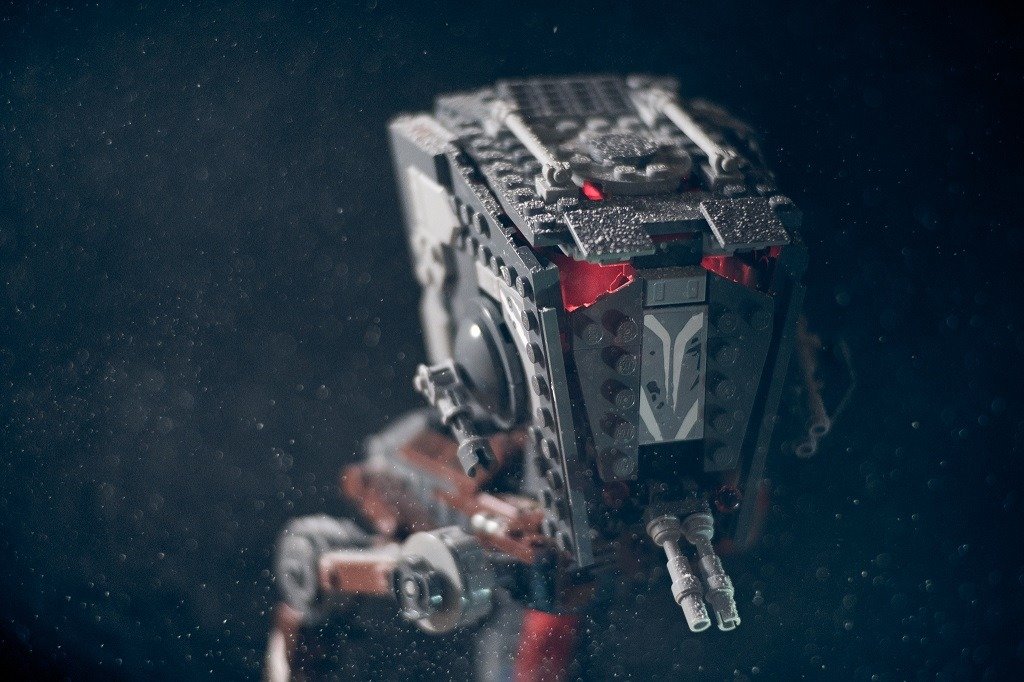
More from Click and Learn Photography
- 6 quickfire photography tips for beginners
- Composition tips: The Rule of Thirds explained
- 5 essential pieces of macro photography equipment
 |
 |
 |
 |

About Alex W.
Alex is the owner and lead writer for Click and Learn Photography. An avid landscape, equine, and pet photographer living and working in the beautiful Lake District, UK, Alex has had his work featured in a number of high profile publications, including the Take a View Landscape Photographer of the Year, Outdoor Photographer of the Year, and Amateur Photographer Magazine.
Thoughts on "8 Toy photography tips & tricks to get you started"
 |
 |
 |
 |
You can Get FREE Gifts. Furthermore, Free Items here. Disable Ad Blocker to receive them all.
Once done, hit anything below
 |
 |
 |
 |

